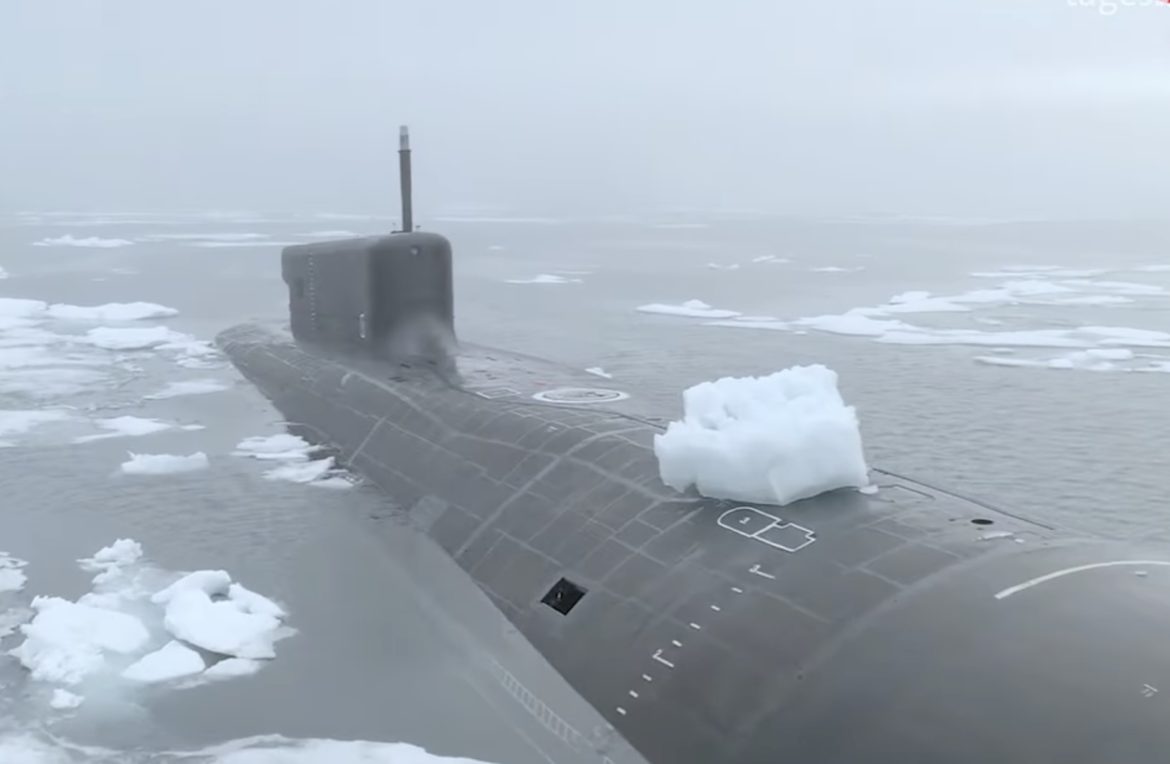An international consortium of news organisations has published detailed findings on a covert Russian programme, codenamed “Harmony”, that has installed an undersea surveillance system across the Barents Sea and adjacent Arctic waters to protect Russia’s nuclear submarine fleet.
The reporting indicates that Russia assembled the network using dual-use equipment sourced from European, American and Japanese manufacturers through layers of front companies, despite sanctions introduced after 2014 and strengthened in 2021.
The project’s core is a constellation of seabed sensors connected by long runs of fibre-optic cable, supported by high-precision sonars, underwater recorders, autonomous vehicles and subsurface antennas. The system is designed to detect intrusions into Russia’s naval “bastions” and to hinder tracking of ballistic-missile submarines, a mission described by naval specialists and set out in consortium reporting.
Procurement records, court files and interviews compiled by the collaboration trace a decade-long acquisition effort beginning in 2012, with planning likely earlier. Components marketed for scientific or industrial purposes were purchased in serial lots and later integrated into a military array. Reporters cite thousands of kilometres of optical cable and repeated orders of hydro-acoustic hardware over multiple years.
At the centre of the network sits Mostrello Commercial Ltd, a Limassol-registered company described in court documents as a procurement front for Russian state end-users. German authorities acted after a 2021 tip from a partner service; a defendant was convicted in Frankfurt in 2025 for coordinating illicit purchases. The U.S. Treasury subsequently listedMostrello under Russia-related sanctions.
Mostrello’s transactions involved suppliers in NATO countries including the United States, United Kingdom, Norway, Sweden and Italy. Several firms told reporters they had followed applicable law, completed due diligence and relied on end-use assurances; some halted sales only after explicit warnings from security services. A Norwegian sale of an acoustic positioning system was blocked following intervention by the domestic security service.
Documents seen by reporters include a 2015 contract for U.S.-made sonar equipment containing pages in Russian and indicating leasing to a Moscow-based firm. Other sales encompassed seabed-mapping sonars, underwater antennas and deep-water drones rated to several thousand metres. Manufacturers said buyers were not on denied-party lists at the time and that no “red flags” were apparent.
The consortium reconstructed the role of specialist vessels that laid cables and deployed sensors. Ageing or repurposed ships, often re-flagged and described as research or commercial craft, executed installation tasks along routes whose patterns — straight runs punctuated by systematic manoeuvres — are consistent with cable-laying and seabed work. Open-source tracking places a semicircular cordon from Murmansk east to Novaya Zemlya and north to Franz Josef Land.
Technical accounts describe how sensors positioned on seamount slopes and ridgelines can cue additional assets and help submarine commanders determine whether they are being trailed, a process known as “delousing”. The array is intended to increase the survivability of nuclear-armed boats by warning of surveillance near exit routes from Northern Fleet bases.
The investigation highlights systemic weaknesses in export-control enforcement. Although the EU tightened its dual-use regime in 2021, national-level implementation and third-country trans-shipment left gaps that allowed components to move through intermediaries. The consortium’s analysis frames Harmony as a test of the EU’s ability to regulate goods with civilian uses but clear military potential.
Sanctions measures have expanded as authorities pieced together the scheme. The U.S. Office of Foreign Assets Control publicly listed Mostrello in late 2024, providing identifiers and citing operations in Russia’s maritime sector; consolidated screening lists used by EU operators now reflect that designation. The listing followed raids and arrests tied to the German case and to allied intelligence warnings.
Reporters who visited Mostrello’s listed premises in Limassol in late September found the office apparently abandoned, with no staff present. The company did not respond to partner media queries. Authorities and reporters link Mostrello’s Cyprus base to a wider web of shell companies across multiple jurisdictions used to obscure the Russian end-user.
The consortium spans Le Monde, NDR/WDR/Süddeutsche Zeitung, The Washington Post, The Times (U.K.), NRK, SVT, KRO-NCRV/Pointer, Kyodo and others, and draws on “Cyprus Confidential” material handled by the International Consortium of Investigative Journalists. The project was coordinated by NDR. Additional German-language reporting provides further technical mapping of the Barents Sea installations.
National responses are uneven. Courts in Germany have delivered a first conviction; investigations and proceedings in other jurisdictions are ongoing. Norway’s intelligence service has warned about complex procurement networks that use legitimate European companies as contact points, concealing the Russian end-user. Officials say locations and performance parameters of the arrays remain classified.
The disclosures come amid heightened focus on Northern Fleet modernisation and on measures to shield strategic assets in the Arctic. Analysts note that Harmony complicates Western submarine operations in the High North and may force adjustments to patrol routes and surveillance techniques. Partner outlets report that installation activity continued after Russia’s full-scale invasion of Ukraine in 2022.
Cyprus has moved to reinforce its sanctions architecture following investigative reporting into the island’s financial services sector, establishing a new unit with enhanced powers to support evasion probes and guidance for operators. The step underscores how regulatory follow-through may evolve as additional Harmony-related records surface.
Further publications are expected from the consortium as legal processes conclude and more material becomes available. Officials and experts cited by partner media assess that Russia’s reliance on Western components for Harmony persisted for years despite controls, and that enforcement lessons from the case will shape future EU and allied export-control policy.


